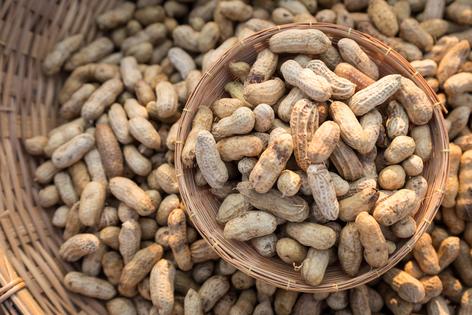Nuts for Peanuts!
Published in Health & Fitness
The peanut is not just an American tradition at baseball games, pubs, and as part of the iconic peanut butter and jelly sandwich, it’s also a global culinary superstar and a nutrient powerhouse
The folklore
Native to South America, this dietary staple dates back thousands of years. Aztecs also used peanuts medicinally to cure fever and soothe sore gums. Today, every part of the peanut is put to good use.
The facts
Nut-like, but not a nut, the peanut (Arachis hypogaea) is a legume in the same family as peas, lentils and beans. Each brown, veined pod or shell houses two or three “nuts,” or kernels encased in a reddish papery skin. A one-ounce serving, about a handful, packs a filling 13% DV (Daily Value, based on 2,000 calories/day) of protein, 29% DV of bone-building manganese, a healthy dose of monounsaturated fatty acids, and antioxidant plant compounds.
The findings
Tree nuts and peanuts, which are protein- and energy-rich and contain several health-enhancing plant compounds, including resveratrol, have been associated with improving several risk factors related to age-related diseases, such as heart disease, cancers and brain disorders, due to antioxidant and anti-inflammatory effects (Antioxidants, 2019). Peanuts have also shown potential in help manage Type 2 diabetes. Patients with Type 2 diabetes who ate a low-carb diet which replaced part of a starchy carbohydrate food item with peanuts lowered their fasting blood glucose and blood sugar after a meal (Nutrients, 2018).
The finer points
Peanuts come with options: peanut butter, peanut oil, peanut flour and flakes, raw or roasted, shelled or unshelled, plain, or a variety of flavors. Store whole in-shell peanuts in a cool, dry place or refrigerated for longer freshness. Shelled and raw peanuts should be refrigerated or frozen, where they’ll keep up to six months. Snacking on peanuts out of the shell is hard to beat, but try tossing roughly chopped peanuts into a stir-fry, over roasted vegetables, onto salads, or layered in a yogurt parfait. Blend them into a smooth butter that promises to make veggies, whole grain crackers, sauces and dressings even tastier.
(Reprinted with permission from Environmental Nutrition, a monthly publication of Belvoir Media Group, LLC. 800-829-5384. www.EnvironmentalNutrition.com.)
©2022 Belvoir Media Group. Distributed by Tribune Content Agency, LLC.







Comments